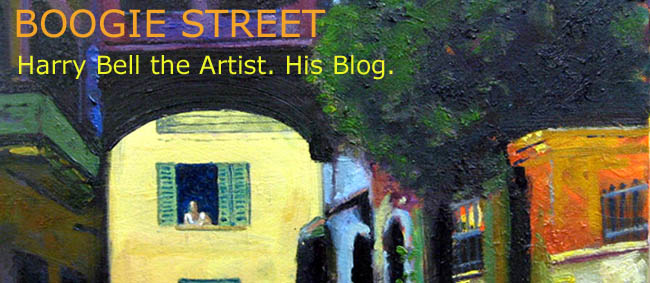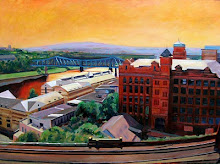Most of the good artists I know review their work in their studios at least once a year, to assess the direction of their work and, more important, to find out something about themselves. In my own case, because I tend to be a bit hard on myself, I call this "reviewing the failures." It's at this time that I decide which paintings will go to the dump, which will stay with me for further work, and which will go to the gallery.
With the work strung out along the walls of my studio, I ask myself some tough questions: Is there a thread running through the work that suggests a new or different direction? What seem to be my strengths and weaknesses? Am I relying too much on one set of color possibilities? How could I stretch the color further? Have just about run out of steam on one particular subject? Or could I find something new and challenging by approaching it from another point of view Are there any really blatant influences that have crept into the work without my acknowledging it? These are some of the questions you, too, should start asking yourself to develop your own critical eye.
PAINTING WITH A FRESH EYE - Alfred C. Chadbourn N.A.
Most of the painters I know collect "How to" books, despite their almost certain expectation that the one thing the books will not tell them is "How to." I have a good collection of them, and they stay on the shelves, not because their advice is much use, but because I Like Looking at the Pictures, and sometimes the choice of palette is interesting or maybe there's a bon mot or two.
Despite this cynical view of instructional books, a select few remain as longtime favourites. And one especially has been such a favourite that when I came across another very cheap remaindered copy, I bought it to keep in the studio while I was at University.
The book is "Painting With a Fresh Eye" by Alfred "Chip" Chadbourn (Watson-Guptill, 1987). Sadly, I see it's now out of print and a bit of Googling shows that Chadbourn himself
died in 1998. Pity, I think I'd like to have met him.
He seems to have been an interesting character. Born in Izmir in Turkey in 1921, he went to art school in Southern California, where he found the local art collections parochial and dull. Taking a freighter to Europe in 1947, he settled in Paris and opened himself up to the lessons of painters like Braque, Picasso, Matisse and particularly Bonnard, who had died that year.
When he returned to live in New York in 1952, he found that his new way of painting suddenly seemed stale because the Abstract Expressionists were in the ascendancy. He hung out with some of them and began to paint in a similar manner. After a year, he threw most of it away and realised the importance of being true to oneself.
I don't think Chadbourn was a great painter, but his work is fresh and direct, with an exciting use of colour and I certainly wouldn't turn my nose up at hanging one of his pictures on my wall.
Most of all, though, he seems to have been a remarkably adept tutor, judging by his books (there's one other - A Direct Approach to Painting, North Light 1980). His advice is sensible, straightforward and mercifully free from waffle. He's not averse to dropping the occasional name, but when they're of the calibre of Braque, Matisse, Hopper, Diebenkorn and Thiebaud, who's going to mind?
All of which is by way of getting to the quote at the beginning of this post. Although I've often decided that a painting simply wasn't going to work and have painted something new on top of it, I've never thought of taking stock the way Chadbourn proposes. After almost 20 years of painting, I'm beginning to accumulate an awful lot of pictures. And these take up a lot of room. It comes hard to say, "This painting is well painted, but it's simply not good enough to hang with some of the others." There's always the feeling that someone with blunted sensibilities will come along and like it more than they really should. But if I don't think it's good enough, it's not very moral of me to sell it to them, is it?
Very soon now, I'm going to take some time out to sift through my back catalogue and either destroy the poor ones or, at least, set them aside to be painted over. And I imagine I'm going to find that quite a cathartic experience.














